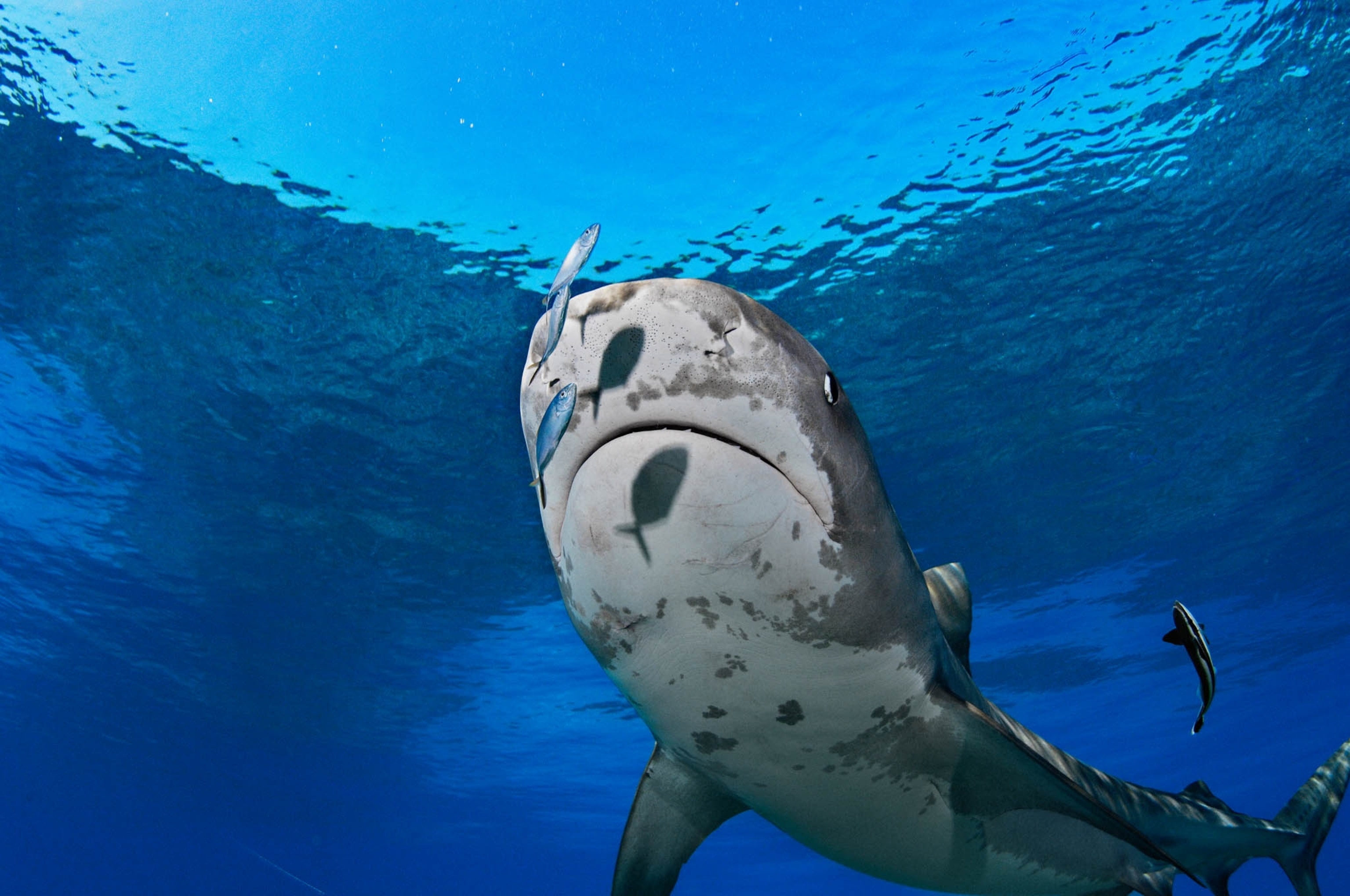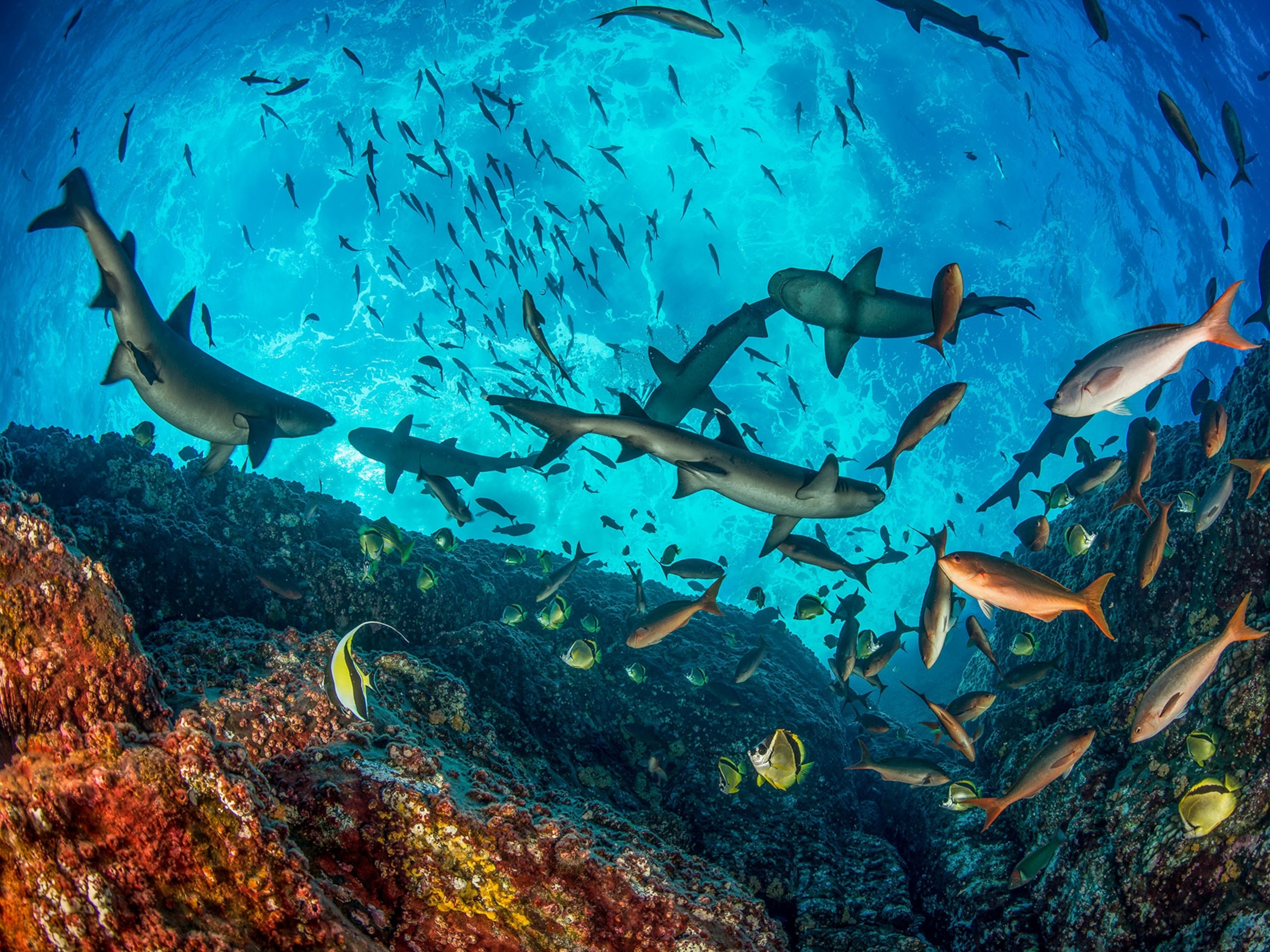
Shark attacks: After recent bites, your questions answered
Encounters with the big fish are rare, but can be deadly. Here's how to reduce your risk, and what you should keep in mind.
Shark attacks have been rising steadily for more than a century.
“The number of worldwide unprovoked shark attacks has grown at a steady pace since 1900, with each decade having more attacks than the previous,” reports the International Shark Attack File at the Florida Museum of Natural History.
Over the past several summers, a number of high-profile shark attacks have been seen in the U.S., from North Carolina to Hawaii. Still, officials say beaches remain safe to visit, since the incidents are statistically very rare. An ocean swimmer has only a one in 11.5 million chance of being bitten by a shark, according to the museum.
In recent years, North Carolina's beach officials have said any shark “acting aggressive,” such as swimming within 100 feet of the shore, could be euthanized. That order prompted criticism from shark experts, who said the shark or sharks involved in attacks would likely not be in the area long.
Here are some more things you should know about sharks and shark attacks:
What kinds of sharks attack humans?
George Burgess, who studies shark attacks at the Florida Museum of Natural History, says coastal incidents are often caused by tiger or bull sharks. Those two species are often found right along the coast and are known to occasionally bite people.
Great white sharks, immortalized by Jaws, are also occasionally responsible for attacks on people. Other sharks involved in incidents around the world in recent years occasionally include mako, nurse, lemon, and spinner sharks.
Why do sharks attack people?
Burgess writes on his website in clear terms that "humans are not on the menu of sharks. Sharks bite humans out of curiosity or to defend themselves."
As a result, the majority of incidents over time have tended to be what's called “provoked” attacks, in which someone is bitten while spearfishing or while trying to catch a shark or release it from a line or net. Among unprovoked attacks, the fish are most often confusing people with their normal prey, often due to poor visibility. Surfers are most often involved, most likely because they spend long periods of time in the water and often splash around like prey.
Why are shark attacks rising?
Although individual years have so few shark attacks that statistical analysis in the short term is dicey, the long-term trend shows an increase in incidents. Part of that is likely due to better reporting, according to the Florida Museum of Natural History.
But beyond that, the most likely explanation for rising numbers of attacks is the “ever-increasing amount of time spent in the sea by humans, which increases the opportunities for interaction between the two affected parties,” according to the museum. A steadily rising human population is also a big factor.
So far in 2019, there have been 36 total shark attacks around the world, according to the Global Shark Attack File.
What should I do if a shark starts attacking me?
Hit it in the nose, which is often enough to end the attack, says the museum. Then head for shore.
If that doesn’t work, claw at its eyes and gill openings, two sensitive areas. “One should not act passively if under attack,” the museum says, because “sharks respect size and power.”
How do I reduce the odds of an attack?
People should remember that swimming in the ocean is always "a wildlife experience," says Burgess. There are some ways to better your already very low odds of getting attacked. For one thing, it's a good idea to avoid known shark nursery grounds, as tourists recently discovered in Recife, Brazil.
Shark safety researcher Christopher Neff suggests avoiding swimming during or after storms, which can make the water cloudy and churn up the bait fish that lead to shark feeding frenzies. Neff also suggests avoiding swimming at dawn and dusk, for the same reasons, as well as swimming near the presence of seals or other prey species or where fishermen have dumped guts.
It’s also a bad idea to feed sharks, which can confuse them or teach them to associate people with food.
Are there other shark safety tips?
Sharks can be attracted to blood, so people should avoid swimming with open wounds. Shiny objects can also attract sharks, who are naturally curious.
Neff suggests avoiding swimming alone or going too far away from shore. He also says people should avoid splashing around too much.
See Pictures of 10 Shark Species
“There are a number of stories about the way playing ‘shark attack’ in the water attracted a shark to the area,” he says.
Do anti-shark wetsuits or repellents work?
A number of companies have marketed wetsuits and surfboards designed with patterns said to repel sharks, from killer whales to lionfish. The jury is still out on whether such products actually make a difference.
“I seriously doubt that will work,” shark ecologist Bradley M. Wetherbee of the University of Rhode Island told National Geographic.
Other research has investigated the efficacy of chemical and even electrical repellents, though more work needs to be done.
Is euthanizing sharks off beaches effective?
No, says Burgess. Sharks are highly migratory fish that can swim thousands of miles in a season, so targeting them in one place doesn’t make sense. Recent attempts to cull great white sharks to reduce attacks on people in Western Australia have met with sharp criticism from scientists.
Shark culls performed in Hawaii in the 1950s showed “no measurable effect on the rate of shark attacks on people,” said Chris Lowe, professor of marine biology at California State University, Long Beach, who analyzed the data taken during those culls.
Does the economy affect shark attacks?
Yes. The more tourists flock to beaches, the more shark attacks tend to occur, since people and fish have more chances to meet. In 2011, a recession year marked by lower tourism, the U.S. saw only 29 unprovoked shark attacks, compared to an average of 39 attacks for the previous decade.
Aren’t more sharks killed by humans than the other way around?
Yes, by a huge multiple. Experts estimate that around 100 million sharks are killed by people every year, in a haul that many consider unsustainable and which threatens many species. Sharks reproduce slowly so they are particularly vulnerable to overfishing.
Sharks are harvested for their fins, considered a delicacy in some Asian countries, and are collected for their meat and skins. They are also frequently ensnared in fishing gear as unwanted “bycatch.”
If many sharks are in trouble, how could attacks increase?
A rising number of countries, from the U.S. to the South Pacific, are passing and enforcing bans on shark fishing, and the fish are showing some localized signs of recovery as a result. However, the overall conservation picture remains dim, especially with illegal fishing.


















